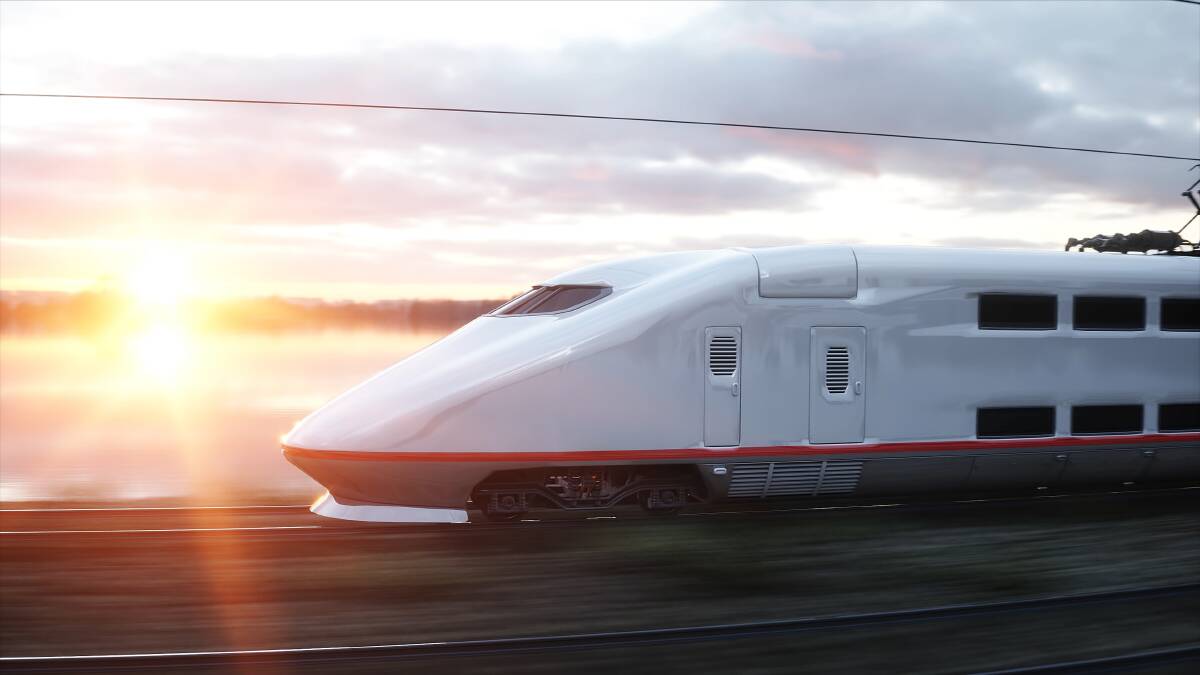
He was like a travelling salesman.
He wore a suit and tie, he had a big bag and he was gradually making his way down the coast when he arrived in Taree.
In the big bag was a model train. Not the type you play with, but a carriage about the size of a shoebox with part of the exterior cut out so you could peek inside.
He posed for photos with the model and we chatted about the possibilities for Taree before it was next stop Forster or Bulahdelah or maybe Raymond Terrace and then Newcastle.
Wherever he went he was selling high-speed rail on behalf of an overseas company or consortium. They might have been Japanese from memory.
He'd weaved his way down the east coast extolling the virtues of high-speed rail and trying to get the local media - the newspapers especially - excited about it.
The year was probably 2000 or 2001, and here we are 20 years later with Labor leader Anthony Albanese pledging $500million for early planning and land acquisition for high-speed rail between Newcastle and Sydney.
Albanese's plan has more merit than the salesman's.
When you build a high-speed rail network you don't have stations at Taree, Port Macquarie or other small to medium-sized towns.
You board in a big city, the train hits speeds of 200 to 300km/h, then you slow to a stop in another city.
The tickets aren't $10 each way either. They're closer to a domestic airfare. And that's where things get tricky.
Qantas, Virgin and the smaller airlines earn a large chunk of their revenue operating the high-volume routes between our capital cities.
Sydney to Melbourne is usually the fourth or fifth busiest air route in the world.
Pre-COVID, there were dozens of flights a day between Sydney and Melbourne and plenty of others between Sydney and Brisbane, Brisbane and Melbourne as well as various links to Adelaide and Perth.
So while a high-speed rail link between Newcastle and Sydney is a great start, it won't have any impact on the share price of Qantas or Virgin.
But if the next stage is a link from Sydney, possibly from Western Sydney to, say, the northern suburbs of Melbourne, that's when Qantas's board and shareholders get tetchy.
Some high-speed trains seat about 900 passengers. That's the equivalent of six Airbus A320s.
And because the trains are usually powered by electricity they're greener than a jet fuel-guzzling, carbon-emitting aircraft.
That's just one reason why European and Asian high-speed rail networks are expanding.
Four of the European Commission's 30 Priority Projects are high-speed rail lines.
Japan has nine lines linking 22 cities with another three lines on the way and China has built 37,000 kilometres of high-speed rail since 2008 with more on the way.
So how do we do it?
Invite Qantas and Virgin to take part. Not to build the thing, but maybe to run it.
When you build a high-speed rail network you don't have stations at Taree, Port Macquarie or other small to medium-sized towns.
Airlines give greater thought to seating, entertainment and service compared with state-owned rail operators.
Sydney to Melbourne would probably be a three-hour-plus journey for business people and tourists.
Passengers will want a comfortable seat, space to work or watch something, food and better toilets than what you currently get on a train.
And before you scrunch your nose up over the three-hour journey compared with a 95-minute flight, remember that check-in is likely to be less onerous for the rail journey than the flight.
What could high-speed rail mean for Novocastrians?
The most common complaint from the white-collar set is that rail is simply too slow to get them from Merewether, Hamilton, Adamstown and elsewhere to Wynyard, which is where the parliament, courts, banks and other businesses are based in Sydney.
Most rail journeys from Newcastle Interchange to Wynyard are a touch under three hours.
That's an early start if you've got a 9am meeting.
Many then opt to drive either the night before or early on the day of the meeting or course or class where they can sit in their own car rather than a carriage that is overflowing by the time it reaches Woy Woy.
High-speed rail with a station in Newcastle's west and only two stops on the Central Coast would be a game changer for thousands of workers, students and tourists.







